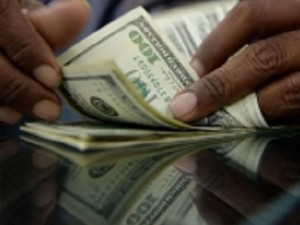Dollar firms in Asia after upbeat US data
TOKYO – The dollar firmed in Asian trade on Friday after data showed manufacturing activity beat expectations and rose to its highest level in two years.
In early trade the greenback bought 99.64 yen, compared with 99.52 yen late Thursday in New York.
The euro fetched $1.3194, against $1.3208 and 131.50 yen from 131.45 yen.
The US Institute for Supply Management’s purchasing managers index (PMI) index came in at 55.4 last month, well up from June’s 50.9 level and its highest level since June 2011. It was also well up from the 51.5 forecast.
A reading above 50 indicates growth, while anything below signals contraction.
Article continues after this advertisementThe report came a day after official figures showed the economy grew 1.7 percent in the second quarter, much better than the 1.1 percent expected.
Article continues after this advertisementThe news boosted Wall Street, where the S&P 500 surged 1.25 percent to a record close, while the Dow climbed 0.83 percent and the Nasdaq rallied 1.36 percent.
But dealers said the dollar will unlikely rise above 100 yen for now as Japanese exporters are primed to sell the unit at that level.
Despite the Fed saying Wednesday it would keep its huge stimulus drive in place for now, dealers continue to focus on the bank’s next move as an improving economy raises the likelihood it will begin reeling the scheme in.
The next event on the horizon is Friday’s jobs report. The Fed has said it will only bring the bond-buying to an end when unemployment falls to 6.5 percent and the economy can stand on its own two feet.
“What’s Fed is most concerned about is employment,” a senior dealer at a major Japanese trust bank told Dow Jones Newswires. “Because of that, (the) jobs data are key.”
The European single currency faced selling pressure after European Central Bank chief Mario Draghi said it would maintain its low interest rate policy or possible announce another cut.
After an ECB policy meeting Thursday he said that while the eurozone economy was showing signs of health “the risks surrounding the economic outlook for the euro area continue to be on the downside.”
These “may have the potential to negatively affect economic conditions.” he added.
